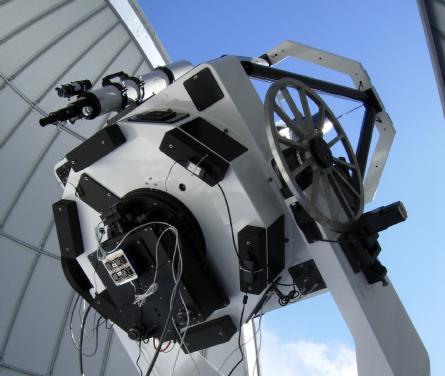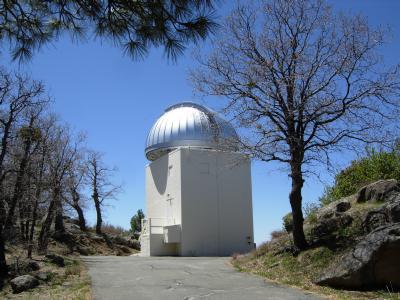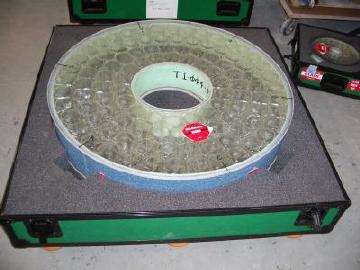
|
|
|
|
May 24, 2010
New Telescope for SDSU's HPWREN-connected Mount Laguna Observatory By Paul Etzel, Director, Mount Laguna Observatory,SDSU San Diego State University will soon see the addition of a larger telescope at its Mount Laguna Observatory. Dedicated in 1968, the Observatory has continued to grow and modernize to enhance the teaching, training, and research missions of the Department of Astronomy. The new telescope will have an aperture of 1.25-meters (50-inches) and is expected to be in operation in a year and a half. It will have a clear field of view of 0.6 degrees (larger than the apparent size of the moon on the sky), and will use a large format detector for digital imaging. The new telescope will collect 56% more light than the largest telescope now in use at MLO and thus be able to study fainter objects.
The telescope will take advantage of the dark skies and steady images found on Mount Laguna, in combination with large blocks of observing time, to exploit the time domain to study phenomena that are transient, require periodic short visits, or require extended periods of observation. Additionally, the telescope will do targeted, follow-up studies of new objects discovered by large survey telescopes coming on-line at other observatories such as PanStarrs (Panoramic Survey Telescope & Rapid Response System) and the LSST (Large Synoptic Survey Telescope). Such targeted studies can only be made from smaller observatories with dedicated facilities.
The primary mirror of the new SDSU telescope will be of a glass-honeycomb design weighing only 300 pounds, which will allow the telescope to slew very rapidly from object to object. Rapid telescope motions are important for studying gamma-ray bursts or responding to other urgent alarms. The new telescope will allow SDSU astronomers to build on their current research programs on variable stars in our Galaxy and its star clusters, searches for planets around other stars, and the searches for novae and supernovae in other galaxies. The project builds on a previous test-bed telescope (ULTRA) built by SDSU and the University of Kansas (KU) along with a partner company to evaluate the experimental technology of Carbon-Fiber Reinforce Plastic mirrors. ULTRA ended in the summer of 2008; however, the Observatory retained the enlarged dome, modern telescope mount, and advanced computer control system, all of which will be used to support the new 50-inch telescope. SDSU and KU astronomers will operate this telescope remotely and robotically over the Internet via High-Performance Research and Education Network (HPWREN), which is operated by the University of California at San Diego.
The funding of the new MLO telescope is one bright spot in the otherwise dismal funding situation for higher education in California. The majority of funds came from the estate of SDSU alumnus, Phillips Claud, after whom the telescope will be named. Mr. Claud was a long-time member of the Mount Laguna Observatory Associates and dreamed of a larger telescope for SDSU. Other major donations were provided by the Dave and Brenda Rickey Foundation, the San Diego Foundation, and Justin Rennilson, and royalties from the SDSU Astronomy Department's spin-off company, Astronomical Research Cameras, Inc. Scores of additional private contributions were made by SDSU Alumni and various friends of the Observatory. |



